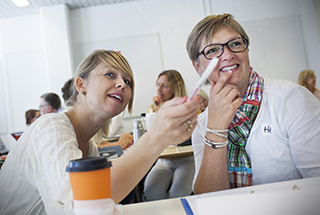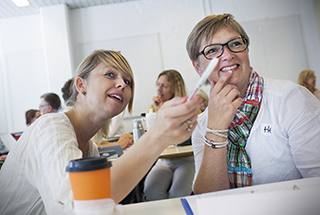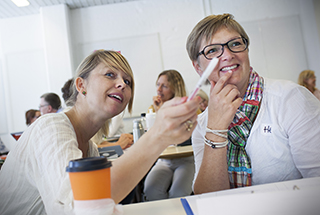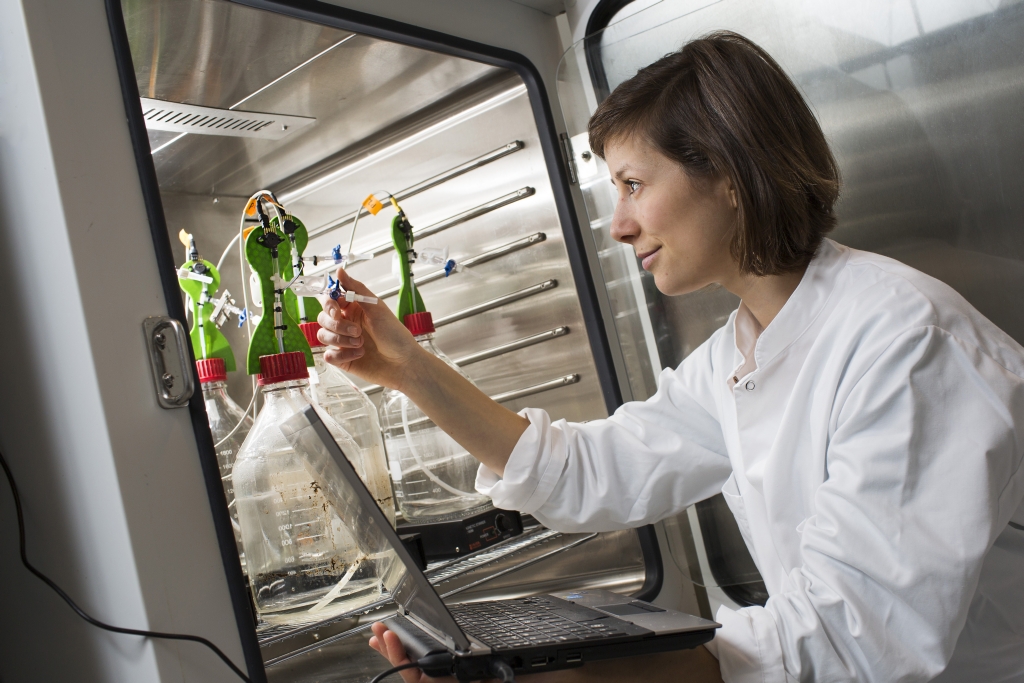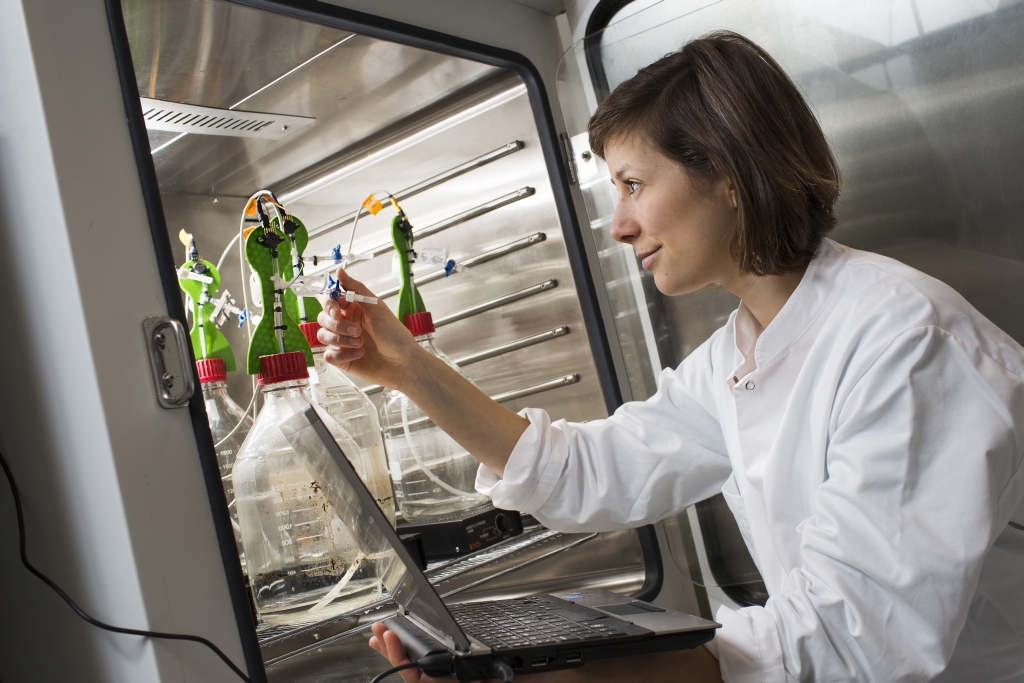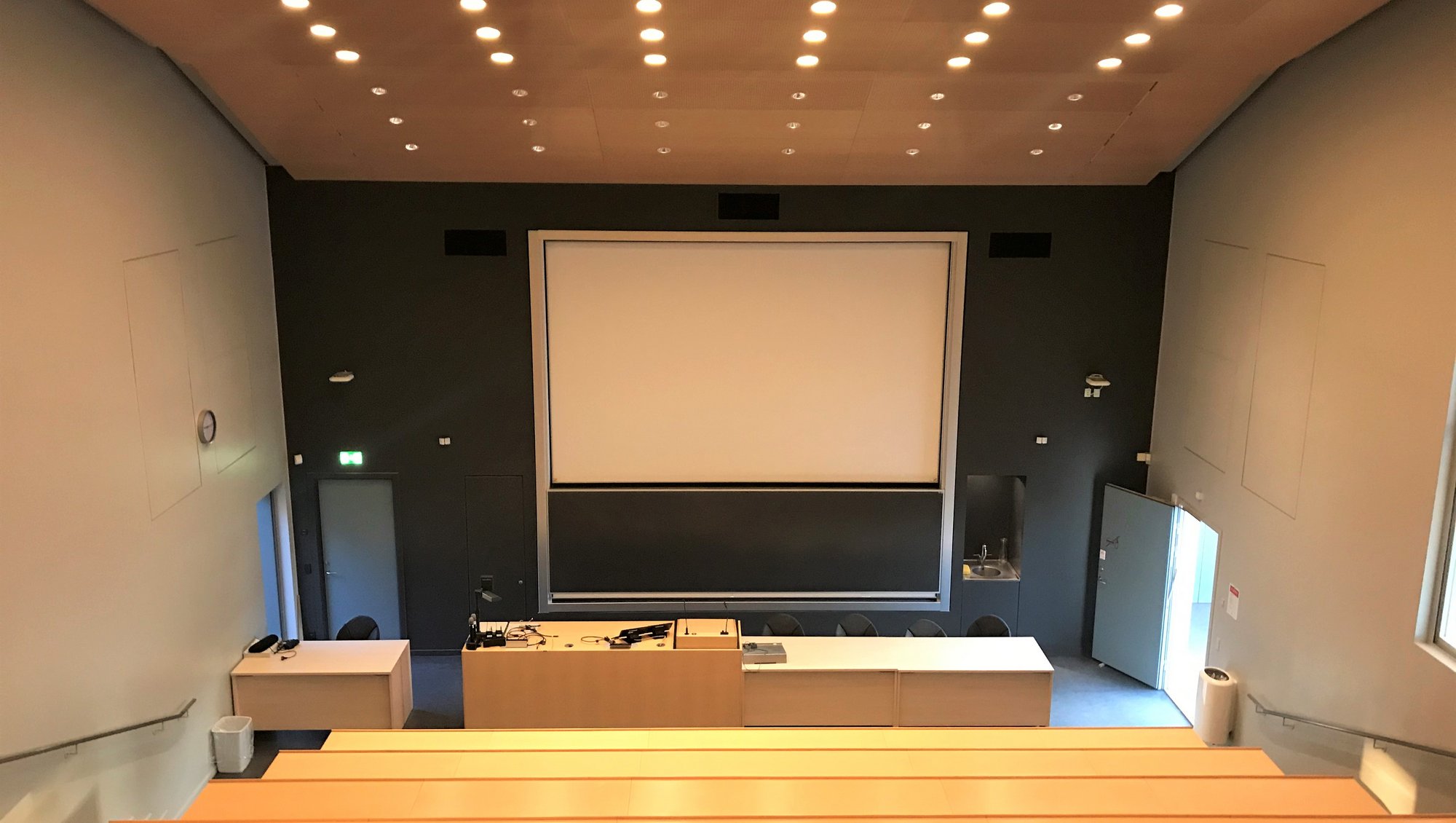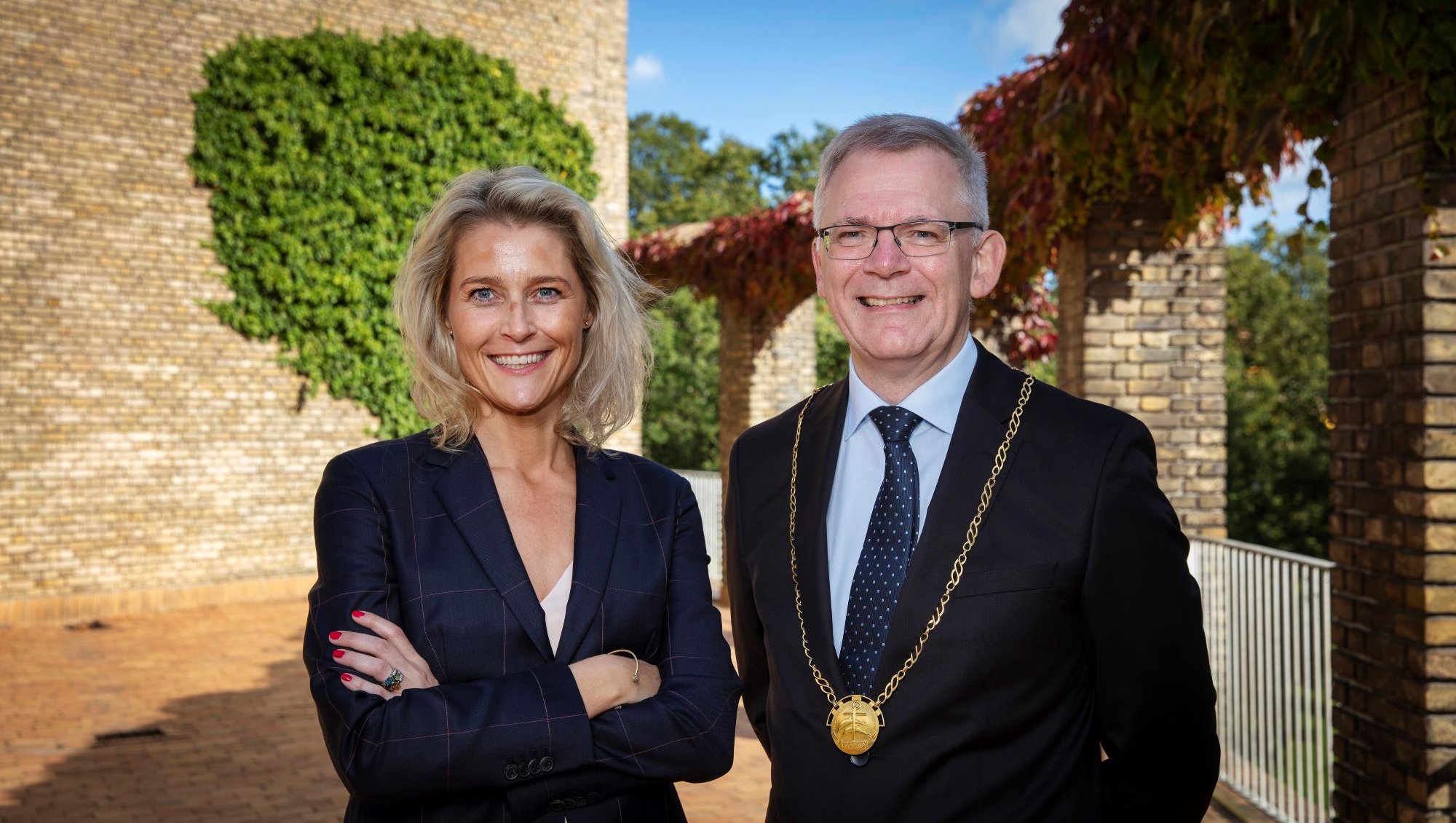Minister dug the first spadeful at the Department of Biomedicine
On Friday 5 September the first sod was cut for the new research building at the Department of Biomedicine, which will soon begin to take shape. Minister of Climate, Energy and Building Rasmus Helveg Petersen, Mayor Jacob Bundsgaard and Rector Brian Bech Nielsen got the construction work off to a good start.

The lawn in front of the Steno Museum was chalked up. The white chalk lines showed where the coming biomedical research facilities would stand. The project had been a long time in the making, and on the first Friday in September, the first sod was cut.
"I would like to commend all the employees for their active engagement in this planning process. There have been plenty of long meetings on matters large and small. I also know that some of you have visited other places, both at home and abroad, to find inspiration so that we end up with something that is a bit better than elsewhere," said Allan Flyvbjerg, dean of the Faculty of Health, to the invited guests.

Researchers, employees, business partners, representatives from foundations, architects and other interested parties were present on the long awaited day. The Minister of Climate, Energy and Building Rasmus Helveg Petersen had made the trip from Copenhagen to Aarhus, while Jacob Bundsgaard was also present to celebrate the big day.
"It is a very exciting building. To be placed in the middle of some of the most sacred buildings in Danish architecture, namely the University Park, places high expectations on its architectural quality, and also on what the building must be able to create," said the mayor in his speech.

“It almost makes you want to get hold of that spade yourself because it will be hard to wait until 2016. But I'd better leave it to the professionals," said Thomas G. Jensen, department head at the Department of Biomedicine.
New animal facilities and state-of-the-art microscopes
The building will comprise two parallel buildings that will be constructed on the corner of Vennelyst Boulevard and Høegh-Guldbergs Gade. A total of four floors will shoot up above ground, with a further two floors underground containing modern animal facilities covering 1,700 m2. The animal facilities can be divided into sections with different levels of cleanliness. Temperature and humidity can be very precisely controlled and work will be done with very advanced genetic animal models.
"The new animal facilities enhance the quality of research. They will not only be used by the Faculty of Health Sciences, but also by researchers from the whole of Aarhus University," said Thomas G. Jensen, department head of the Department of Biomedicine.
The building will also contain new laboratories, offices and common areas. The laboratories will have very advanced microscopes, where you can e.g. examine what is going on in the brains of animals at the molecular level in three dimensions. As a part of the new facilities, additional Class 2 laboratories will also be constructed compared to what the department has access to today.
Skou and Einarson new names in the park
The precise layout of the new buildings for the various groups of employees has yet not been finally determined, but a total of 300 employees can look forward to moving in towards the end of 2016. The anatomy and Bartholin buildings will subsequently be renovated and are expected to be ready in 2018.
The new building will be named the Skou Building after Emeritus Professor Jens Christian Skou, who received the Nobel Prize in Chemistry in 1997. He has been part of the Department of Biomedicine since 1954 and despite being 95 years old, he still has an office at the department. He was also present as the first sod was cut.

Following the renovation of the anatomy building complex, it will be renamed the Einarson Building after Lárus Einarson, who was the first professor at the Institute of Anatomy. The Bartholin building retains its current name.

